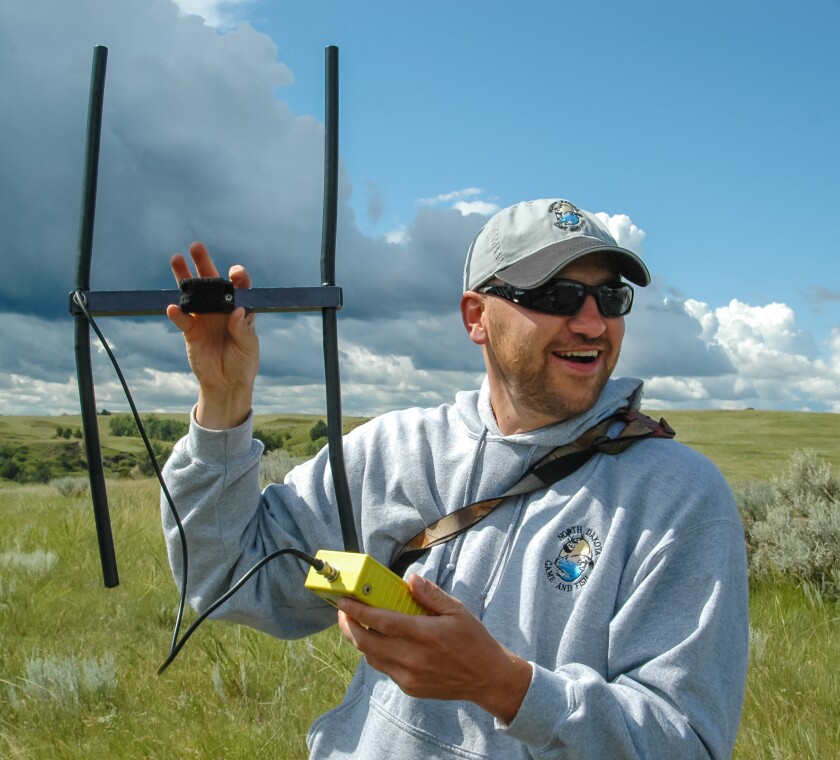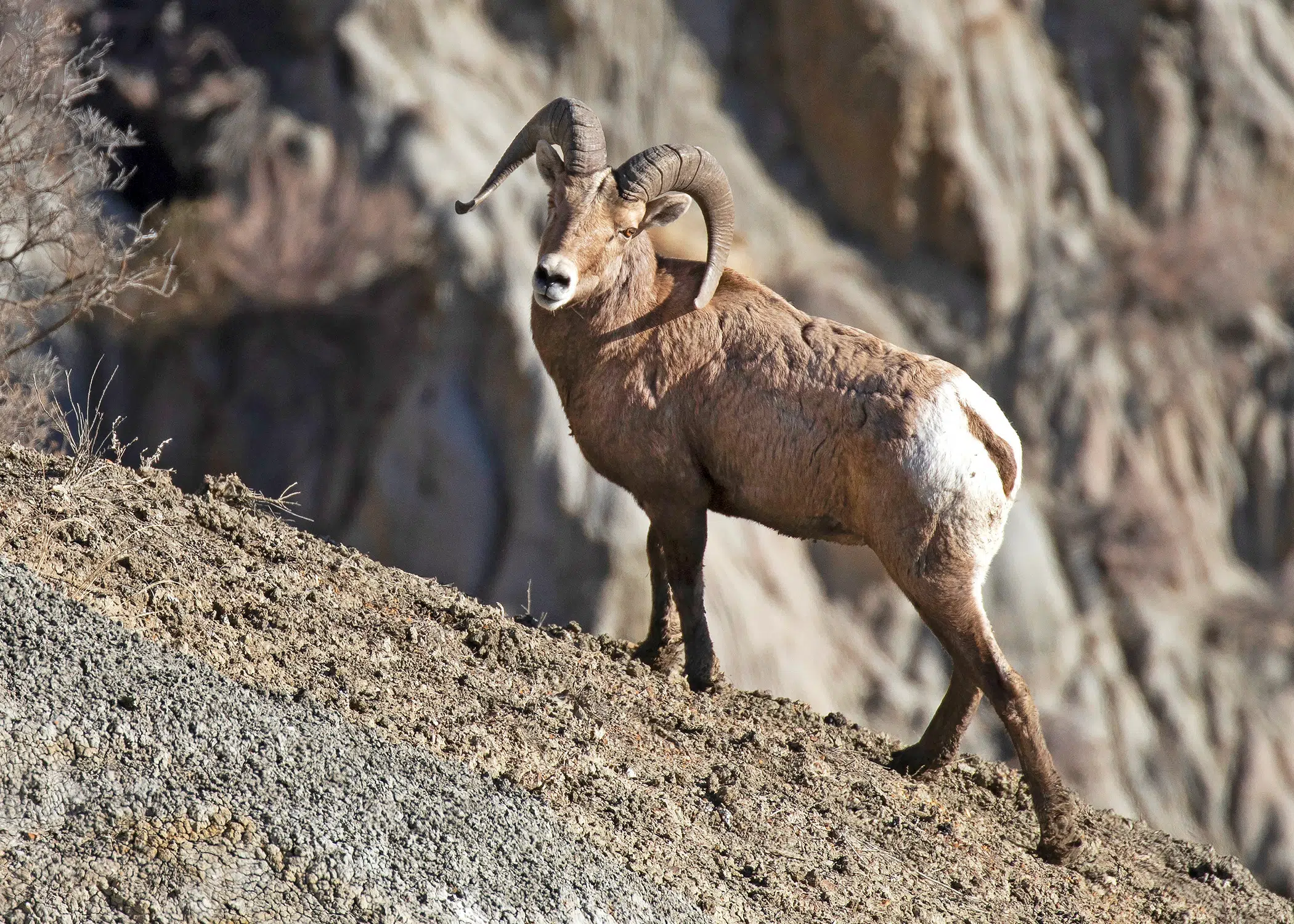by Doug Leier
I went to college with Brett Wiedmann at North Dakota State University back in the early 1990s. I’ll be the first to admit he was one of the smart guys. He was a curve buster. I was a curve survivor.
There was no doubt in my mind that whatever path Brett chose, success was sure to follow. He was destined to be a huge asset to the natural resource and conservation field.
In college, when it came to knowledge, skill and ability, Brett was a guy you wanted in your class project or study group.
Today, he’s a veteran North Dakota Game and Fish Department biologist and expert on bighorn sheep. My role is more of a general biologist and communicating the knowledge to the public from smart biologists like Brett.
2023 North Dakota bighorn sheep status
The latest survey results show North Dakota with a record 347 bighorn sheep in the grasslands of western North Dakota, up 4% from 2021 and 15% above the five-year average. The count surpassed the previous record of 335 bighorns in 2021
Altogether, biologists counted 96 rams, 206 ewes and 45 lambs. Not included are approximately 40 bighorn sheep in the North Unit of Theodore Roosevelt National Park and bighorns introduced to the Fort Berthold Indian Reservation in 2020.
The northern Badlands population increased 4% from 2021 and was the highest count on record. The southern Badlands population was unchanged at the lowest level since bighorns were reintroduced there in 1966.

When it comes to the biology, management and status of bighorn sheep, myself and the rest of the department listen while Brett explains.
“We were encouraged to see the count of adult rams down just slightly from last year, and adult ewes were at record numbers,” Wiedmann said. “Unfortunately, following a record summer count of lambs, winter survival was only 54%, the lowest level on record and well below the long-term average. The lamb recruitment rate was also near a record low. Nearly six months of harsh winter conditions was the likely cause of poor winter survival of lambs.”
Department biologists count and classify all bighorn sheep in late summer, then recount lambs the following March as they approach 1 year of age to determine recruitment.
Department staff, in conjunction with biologists from the Three Affiliated Tribes Fish and Wildlife Division, also reported the bighorn sheep translocated in January 2020 from Rocky Boy’s Reservation in Montana to the Fort Berthold Reservation performed exceptionally well their third year in the state, as the population has nearly tripled.
There are currently about 470 bighorn sheep in the populations managed by the North Dakota Game and Fish Department, National Park Service and the Three Affiliated Tribes Fish and Wildlife Division. Wiedmann said the next benchmark is 500 bighorns in the state, which seemed improbable just a few years ago.
“Considering how severe last winter was, we were very encouraged by the results of the 2022 survey,” he said.
A bighorn sheep hunting season is tentatively scheduled to open in 2023. The status of the season will be determined Sept. 1, following the summer population survey.
Game and Fish issued five licenses in 2022, and all hunters were successful in harvesting a ram.




